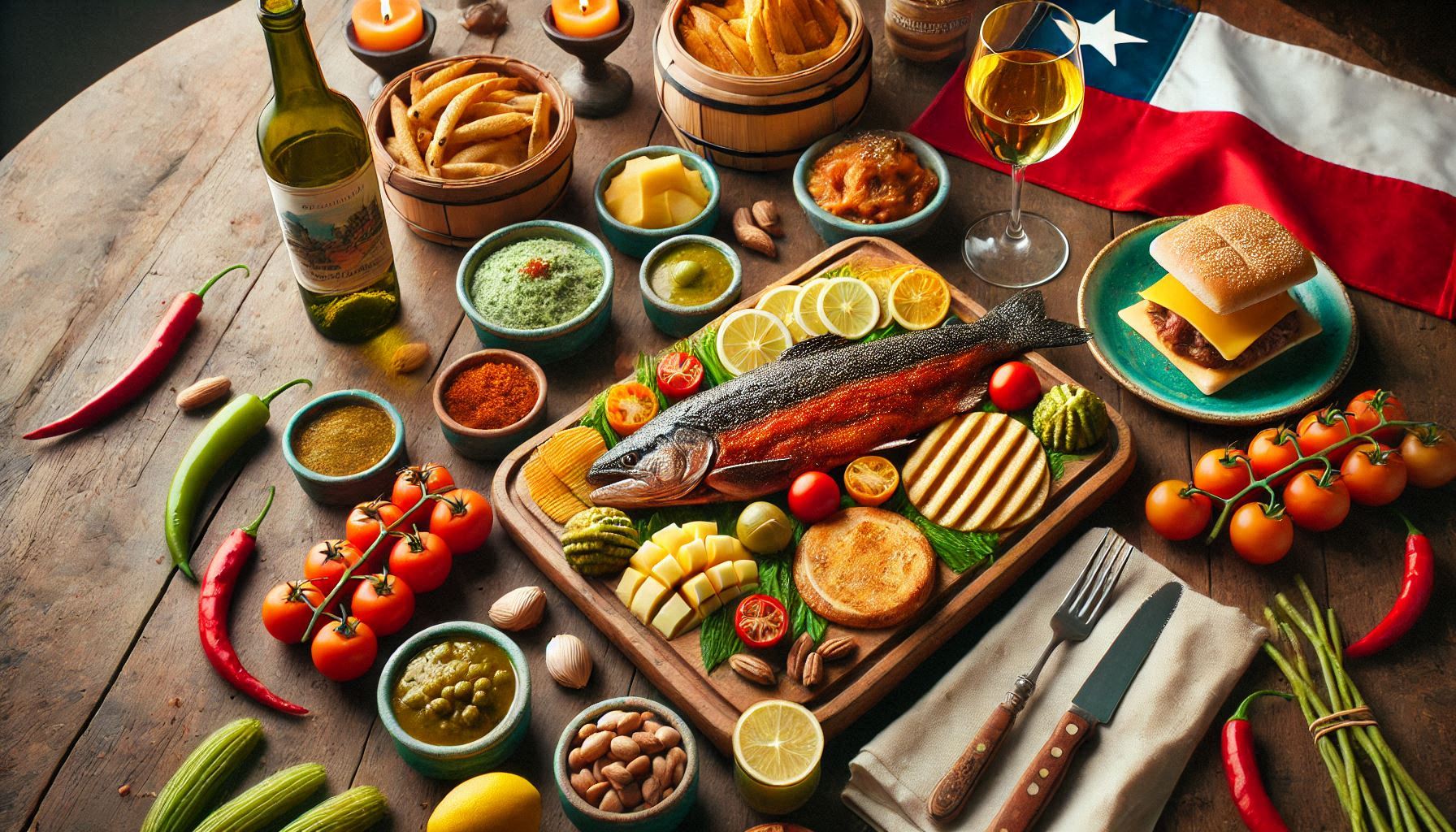Chile, with its diverse geography spanning the driest desert in the world, the Andes Mountains, and an extensive coastline, offers a rich and varied gastronomy. Gastronomic tourism in Chile is an immersion into unique flavors, influenced by native ingredients, indigenous traditions, and European influences. Let’s explore some of the main aspects of Chilean cuisine:
Influences on Chilean Gastronomy:
- Native Ingredients: Corn (choclo), potatoes, pumpkin, pebre (typical sauce), as well as various seafood and fish from the coast, are fundamental ingredients in Chilean cuisine, inherited from indigenous cultures.
- Mapuche Influence: The Mapuche culture, the original people of Chile, has a strong influence on gastronomy, with dishes like curanto, a stew of meats, seafood, and potatoes cooked in a hole in the ground, and merkén, a smoked spice made from chili peppers.
- Spanish Influence: Spanish colonization brought ingredients such as wheat, beef, olives, and various culinary techniques.
- Immigrant Influences: German, Italian, and other immigrants also contributed to the diversity of Chilean cuisine, with dishes and techniques that have been incorporated over time.
Typical Chilean Dishes:
- Empanadas: Present throughout Latin America, Chilean empanadas have a special touch. The most common are empanadas de pino, filled with ground beef, onions, olives, raisins, and hard-boiled egg.
- Pastel de Choclo: A comforting dish made with ground beef, chicken, olives, hard-boiled eggs, and covered with a creamy corn layer.
- Cazuela: A rich and nutritious soup, usually made with beef or chicken, potatoes, pumpkin, choclo, and other vegetables.
- Curanto: An ancestral cooking method, typical of southern Chile, which consists of cooking meats, seafood, potatoes, and other ingredients in a hole dug in the ground, with hot stones.
- Completo: The Chilean hot dog, which includes chopped tomato, mashed avocado (palta), mayonnaise, and sauerkraut. There is the “Italian” variation, with tomato, avocado, and mayonnaise (the colors of the Italian flag).
- Lomo a lo Pobre: A hearty dish consisting of a steak topped with fried onions, a fried egg, and French fries.
- Ceviche: Raw white fish marinated in lemon juice, with red onion and cilantro.
- Chupe de Mariscos: A creamy seafood stew with bread, cheese, and other ingredients.
- Humitas: A kind of Chilean tamale, made with ground fresh corn and cooked in corn husks.
- Sopaipillas: A fried pumpkin dough, usually served with pebre (sauce) or powdered sugar.
Typical Chilean Drinks:
- Chilean Wine: Chile is a renowned wine producer, with emphasis on the Cabernet Sauvignon, Carmenere, Merlot, Syrah (reds) and Sauvignon Blanc and Chardonnay (whites) varieties.
- Pisco: A grape brandy used in the preparation of the famous Pisco Sour.
- Terremoto: A sweet and refreshing drink made with pipeño white wine, pineapple ice cream, grenadine, and fernet.
Gastronomic Regions of Chile:
- Northern Chile: Indigenous influences and the use of ingredients such as quinoa, rica rica (an aromatic herb), and dishes with llama meat.
- Central Zone: Predominance of beef dishes, such as lomo a lo pobre and pastel de choclo, in addition to the strong wine production.
- Coastal Zone: Abundance of seafood and fresh fish, with dishes like ceviche and chupe de mariscos.
- Southern Chile: Mapuche influence, with dishes like curanto and the use of ingredients such as potatoes and lamb.
Tips for Gastronomic Tourism in Chile:
- Visit Local Markets: Municipal markets are great places to experience authentic Chilean cuisine, with street food stalls, fresh produce, and regional ingredients. The Central Market of Santiago is an unmissable example.
- Participate in Cooking Classes: Learning to prepare typical Chilean dishes is a great way to delve into the local culture.
- Try Chilean Wines: Visit wineries and participate in tastings to learn about the different types of wines produced in Chile.
- Explore the Different Regions: Each region of Chile offers a unique gastronomic experience. Plan your trip to explore the diversity of flavors of the country.
- Don’t Be Afraid to Experiment: Venture into typical dishes and discover new flavors.
Gastronomic tourism in Chile is a rich and diverse experience, offering the opportunity to get to know the country’s culture through its flavors and traditions. By exploring Chilean cuisine, you will be immersed in the history, culture, and identity of this fascinating country.
